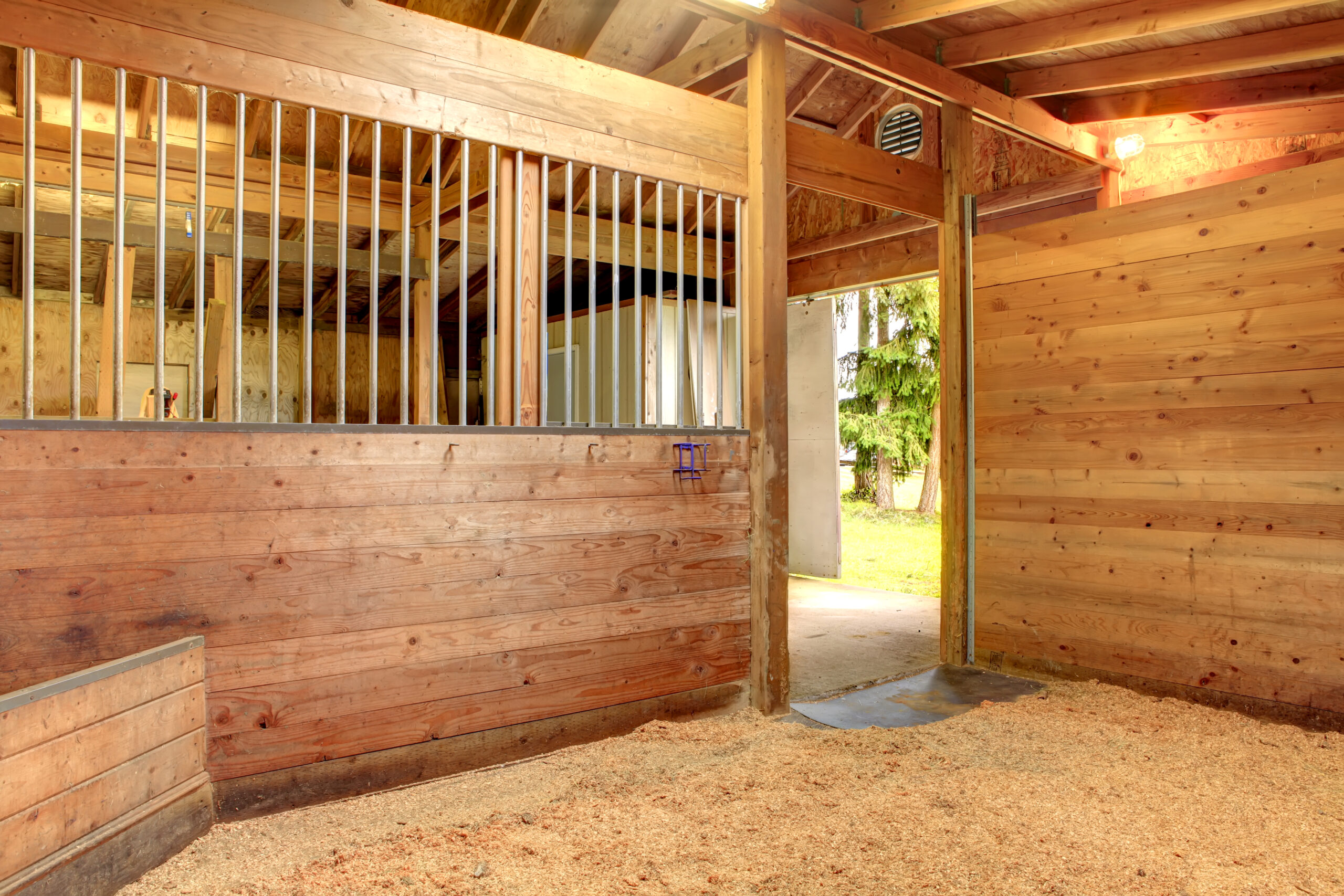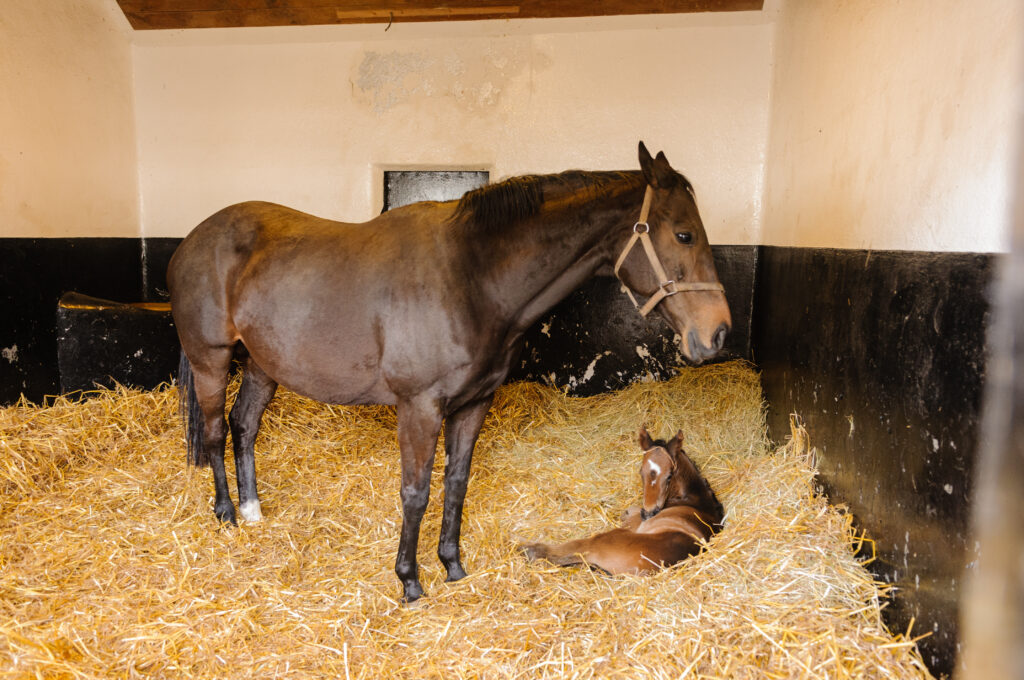Who doesn’t like to live in a house where they can come home from a long day and go to sleep in their comfy bed? Horses are just the same, they enjoy being able to lay in their stall and roll comfortably. So how are some ways you can help keep your horse comfortable in their stall? A lot has to do with their bedding, many of us might just use the bedding that our boarding facility provides us with. But there is more to stall bedding than meets the eye.
The role bedding plays greatly impacts our horses lives on a daily basis that we may not realize. Bedding type, quality, cleanliness, and depth can positively impact the sleep quality and, consequently, the wellbeing of your horse. Other things can impact a horse’s comfort like stable size, light exposure, pre-existing diseases, pain, ect. Increased bedding depth can affect your horses welfare and performance along with how well they are able to sleep. If your horse sleeps on their sides it indicates that they are feeling relaxed and safe. This allows them to go into their REM cycle of sleeping.
There are many different bedding materials, and what suits someone else’s horse may not suit yours. But luckily there are multiple options for what you can choose for bedding. Choosing the right option for your horse is important, so you must take the time to assess the materials and consider which bedding will best meet their individual needs. Some factors you will want to take into consideration when choosing bedding would be quality, efficiency, and support.
Quality of bedding is important, to help keep the dust levels to a minimum. If your horse has a respiratory issue, the ideal choice would be bedding with less chance of dust. Using bedding that has no mold spores and low dust levels can help prevent a horse from getting respiratory issues or adding to those issues if your horse may already have them. Bedding should allow for easy removal of droppings and urine absorption. Bedding with poor urine absorption can increase the levels of ammonia in the stall, which can negatively affect your horse’s respiratory health. Your bedding choice should provide support for your horse’s hooves while standing, and for the entire body when lying down. Proper bedding allows our horses to lay down comfortably and it keeps them from slipping when they stand up. Thick bedding can also help alleviate your horse from any pain it may be having, especially for horses that spend more time in a stall than outside.
There are many different types of bedding, ranging from straw, wood shavings, wood pellets, and more. Wood shavings are a great option for bedding because it is highly absorbent and easy to clean. You want to make sure those shavings are made specifically for horses – some wood products are toxic to horses including Black Walnut shavings. Shavings are soft, easy to clean and store, and they are very absorbent. The downside of wood shavings for bedding is it produces a lot of dust, so horses with allergies or sensitive respiratory systems can be affected by the dust. Other things to look at with wood shavings is that the shavings soil very quickly so they must be replaced often.
Wood pellets are a very popular choice for bedding, as they are very absorbent and also easy to store. The pellets are small and hard when unpacked, but once they absorb water they break apart and turn into a sawdust-like material. This choice of bedding is a great option, long lasting and easy to clean up along with low dust levels. The negative side for using pellets is that since they are small, if ingested horses can colic or suffer gastrointestinal blockages and obstructions. You can pre-soak the pellets to break them up, but that takes additional time per stall and can be time consuming for large programs.

Straw is also a common source of bedding for horses, it is safe for horses and made from grains such as wheat, barley and oat. Straw can help keep moisture levels down by creating a protective barrier. A disadvantage to straw bedding is that some horses could find it as a great source for a midnight snack and it can be harder to clean. It is best to take a sample of the straw and test out if your horse will find it appetizing.
Some people like to use paper shavings as bedding for their horses; they are dust-free and highly absorbent, so this could be a good choice for horses with allergies. Paper shavings are available in both bales or in bags and are easy to store as long as they are kept in an area that is protected from rain or wind. A plus to using paper shavings is that horses generally are not interested in eating it. If you decide to use paper shavings in your stalls, you need to make sure the stalls have good insulation from the wind as paper will easily blow away. The downside to using paper for horse stall bedding is that the paper will get heavy and slippery when soiled, so you’ll need to pay extra attention to keeping your horse’s stall dry and clean. Another disadvantage is that paper will clump together when it’s wet, which will cut down on the cushiony effect that the other bedding choices will provide.
Some final things to consider when choosing bedding is to make sure it is not toxic if eaten, and is not an irritant to the skin. Your quality of bedding material matters, but only to the extent in which it is maintained. Our horses are our everything so safe, quality bedding is a priority!
